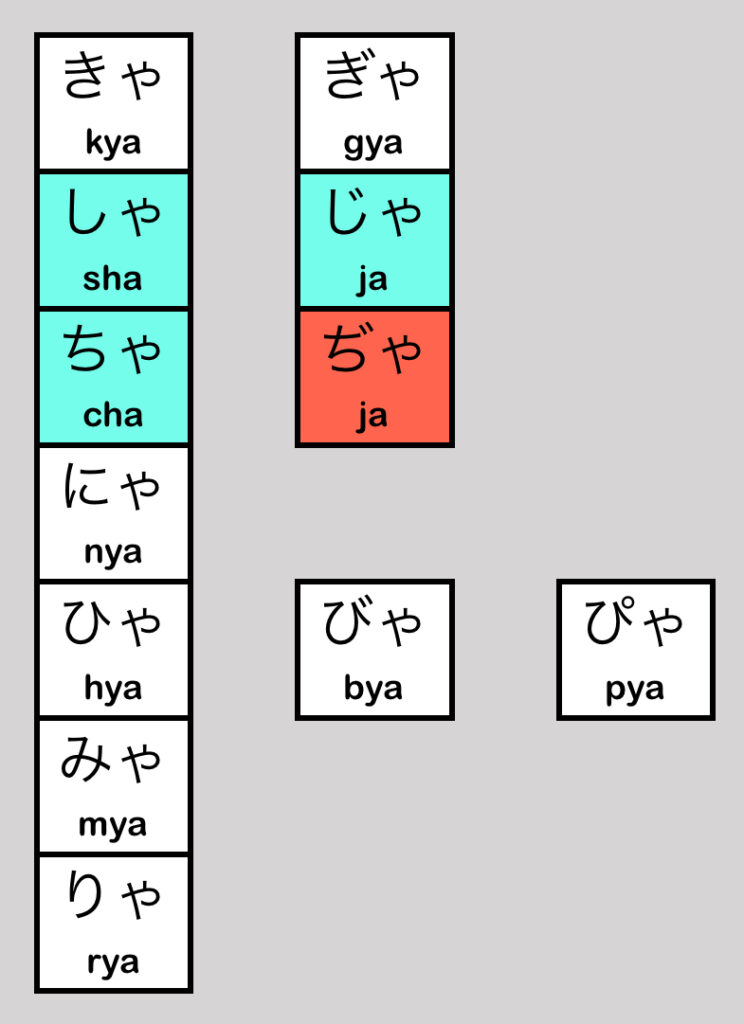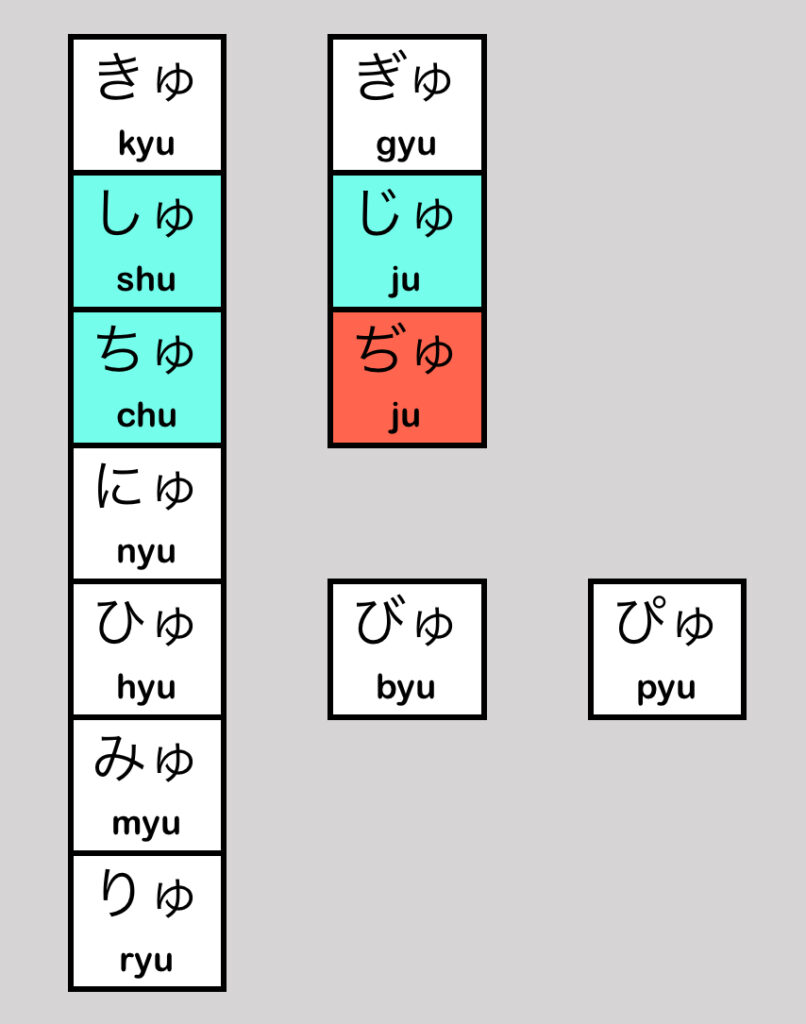Great news everyone: We’ve reached our last set of hiragana characters! よーしゃ!
Let’s get into them.
The い VSG
For a review of what a VSG is, take a look here. In this post we’re going to look at most of the い VSG. We won’t need the い character.

In order to make the last set of sounds we need to combine the 12 characters above with the 3 characters from the Y sound group. Does that sound confusing? Let’s take a closer look, shall we?
The や Sound Group

Notice that we took 12 characters from the い VSG and attached a small や character to them. (For a size comparison, here they are next to each other: やゃ). Most of the time the small や (as expected) adds a “ya” sound to the consonant. The exceptions are しゃ, ちゃ, and じゃ (where the small つ only adds an “a” sound).
Also, I colored ぢゃ in red because you will probably never see it out in the wild, but I added it here for completeness. (And because 12 is a much nicer number than 11, innit?)
The ゆ Sound Group

Likewise, this group combines the 12 characters of the い VSG with the small ゆ character. In the case of しゅ, じゅ, and ちゅ only a “u” sound is added. Again, if there is ever a “ju” sound, it will almost always be じゅ instead of ぢゅ.
The よ Sound Group

Finally we can add a small よ character to the same 12 characters to get the よ sound group.
nyo Or nyo??
Now that we have looked at all of the Hiragana in Japanese, an interesting problem can arise. Let’s say that there is a very kind Japanese person teaching you about the language. He writes the word “onyomi” for you in English. How would you write this in Hiragana??

The answer is…
THIS is one reason you need to know Kanji! We’ll come back to this later.

For now, what you should know is that no word or Kanji sound can start with the ん character.
Conclusion
So there you have it! Coincidentally, if you care about formal names, these 36 characters are called 拗音(ようおん).



